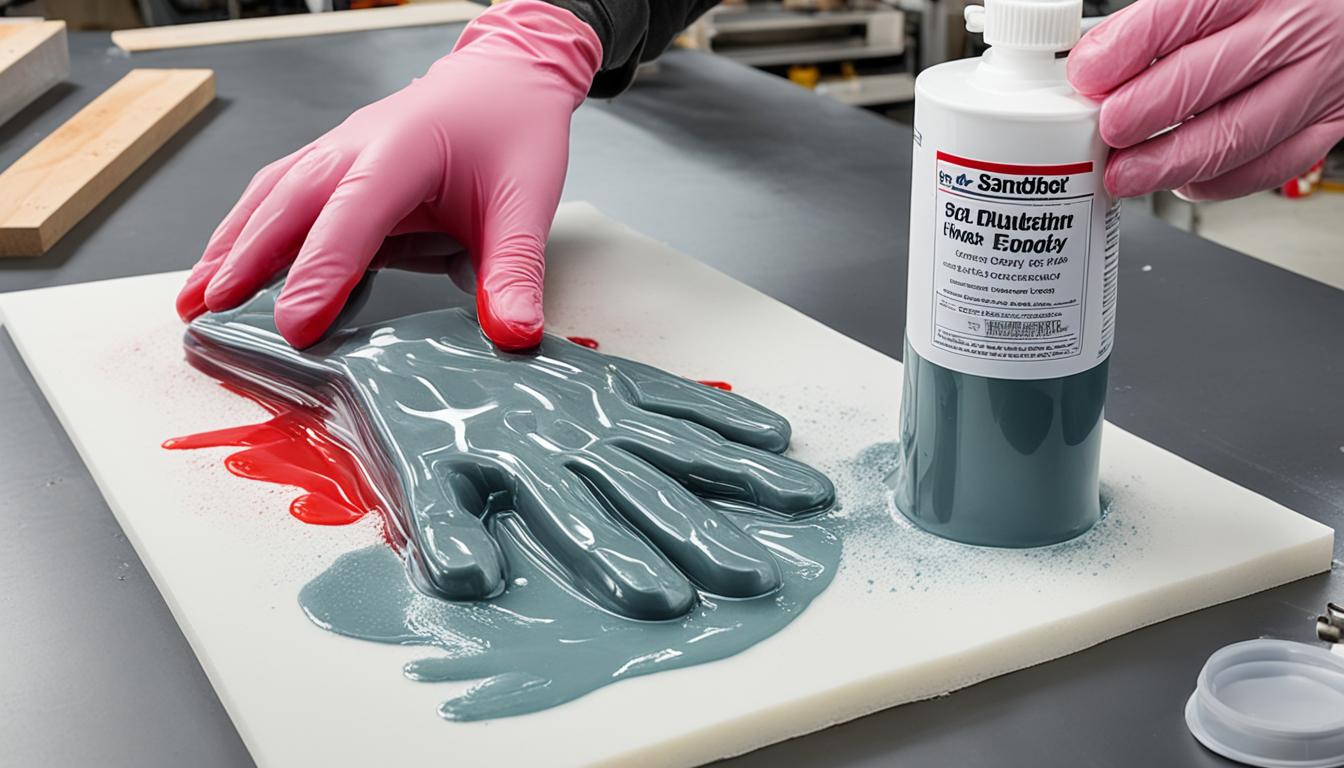
Navigating Through the Challenges of epoxy Mold
Working with epoxy molds can present various challenges, but with the right expert tips, you can create flawless and durable castings. Understanding the common issues encountered during the epoxy mold process is crucial for achieving exceptional results.
Epoxy molds offer unique properties that make them highly desirable for casting applications. Their durability, flexibility, and resistance to temperature and chemicals provide artists and craftsmen with a versatile medium for their creations.
However, certain challenges may arise during the epoxy molding process. Air bubbles, uneven surfaces, and demolding difficulties are common issues that can hinder the quality of your castings. It is essential to address these challenges effectively to achieve the desired outcome.
In this article, we will explore the common issues encountered when working with epoxy molds and provide expert tips to overcome them. By implementing these strategies, you can ensure flawless castings that showcase your artistic vision and craftsmanship.
Key Takeaways:
- Understanding the properties of epoxy molds is vital for successful casting.
- Air bubbles, uneven surfaces, and demolding difficulties are common challenges in epoxy molding.
- Expert tips provide effective solutions to overcome these issues and create flawless castings.
- Mastering the art of epoxy molding requires patience and practice.
Understanding Epoxy Molds and Their Properties
In this section, we will delve into the fundamentals of epoxy molds and explore their remarkable properties. Whether you’re a seasoned professional or just starting your journey in the world of epoxy casting, gaining a comprehensive understanding of the unique characteristics of epoxy molds is crucial for success.
“Epoxy molds possess remarkable properties that contribute to their popularity among artists and craftsmen. Let’s take a closer look at some of their key attributes.”
Durability
Epoxy molds are known for their exceptional durability. Made from epoxy resin, these molds are designed to withstand repeated use and maintain their structural integrity over time. Their robust construction allows for the creation of intricate castings without compromising the mold’s lifespan.
Flexibility
Flexibility is another key characteristic of epoxy molds. Unlike traditional molds, which can be rigid and difficult to work with, epoxy molds offer a high degree of flexibility. This flexibility enables them to capture even the most intricate details of your design, ensuring precise and accurate castings.
Resistance to Temperature and Chemicals
Epoxy molds exhibit impressive resistance to both high and low temperatures, making them suitable for a wide range of casting applications. Additionally, these molds are highly resistant to various chemicals, ensuring that they remain intact and unaffected when working with different casting materials.
By understanding the properties of epoxy molds, including their durability, flexibility, and resistance to temperature and chemicals, you can confidently navigate the intricacies of the casting process. Now, let’s explore how to overcome common challenges that arise when working with epoxy molds.

Stay tuned for the next section where we will discuss effective strategies to overcome common issues in epoxy molding.
Overcoming Common Issues in Epoxy Molding
Working with epoxy molds can present a unique set of challenges, but with the right strategies, you can achieve flawless results and create visually appealing epoxy castings. In this section, we will explore some of the common issues encountered during the epoxy molding process and provide step-by-step solutions to overcome them.
Air Bubbles
One of the most common issues in epoxy molding is the formation of air bubbles, which can result in unsightly imperfections in your castings. To prevent air bubbles, it’s important to properly mix the epoxy resin and hardener, ensuring a thorough and consistent blend. Additionally, you can use a heat gun or torch to gently remove any trapped air bubbles after pouring the epoxy into the mold.
Uneven Surfaces
Another challenge in epoxy molding is achieving smooth and even surfaces. To address this issue, make sure to carefully level and prep the mold before pouring the epoxy. You can use a leveling tool or plastic spreader to evenly distribute the epoxy throughout the mold. Additionally, gently tapping the mold on a solid surface can help to release any air bubbles and create a more uniform surface.
Demolding Difficulties
Demolding can sometimes be a tricky process, especially when working with intricate or delicate molds. To make demolding easier, consider applying a mold release agent or using a silicone mold, which offers greater flexibility and ease of removal. Additionally, you can place the mold in the freezer for a short period of time before demolding, as the cold temperature can help to loosen the epoxy from the mold.
By addressing these common issues and implementing the strategies mentioned above, you can overcome the challenges associated with epoxy molding and achieve professional-quality results. Remember to experiment and practice with different techniques to find what works best for your specific project. With patience and persistence, you’ll soon become a master of epoxy molding!

Conclusion
In conclusion, mastering the art of epoxy molding requires a deep understanding of the properties of epoxy molds and effective strategies to overcome common mold-related issues. By implementing the expert tips provided in this article, you can create flawless and durable castings with ease.
By recognizing epoxy molds as versatile and durable materials, artists and craftsmen can embrace the challenges they present and transform them into opportunities to enhance their skills. Rather than hindering the creative process, these challenges can spark innovation and lead to the creation of exceptional works of art.
Remember, the key to success lies in learning from each molding experience and continuously refining your techniques. With time, patience, and a willingness to experiment, you can achieve stunning results that showcase your craftsmanship and artistic vision. So, don’t be discouraged by the complexities of epoxy molds—embrace them and unlock your full molding potential.




